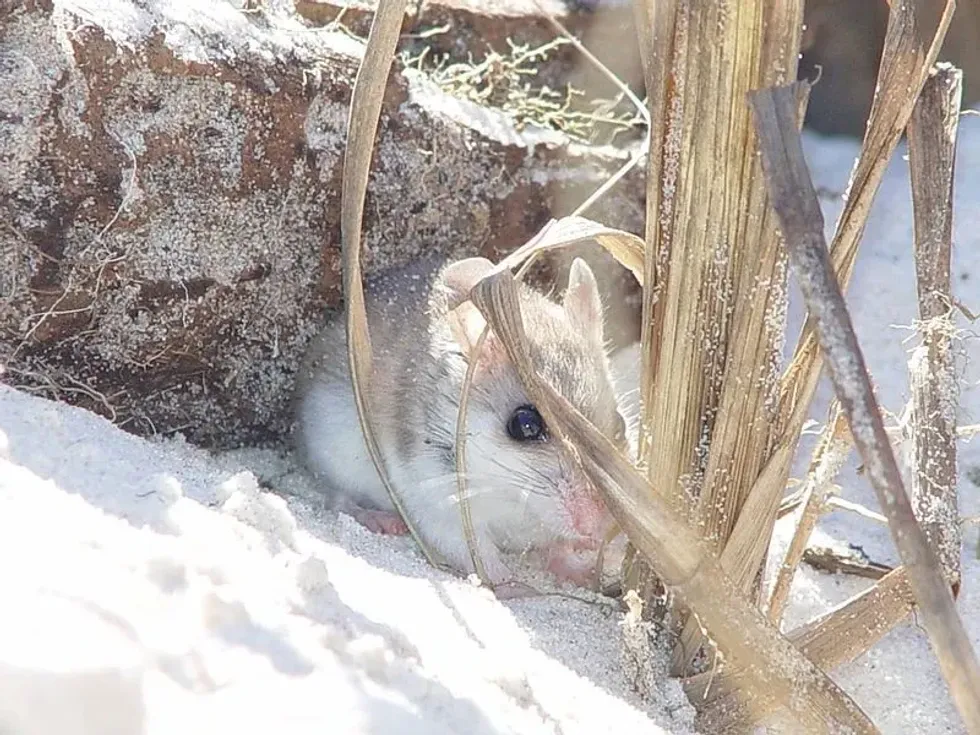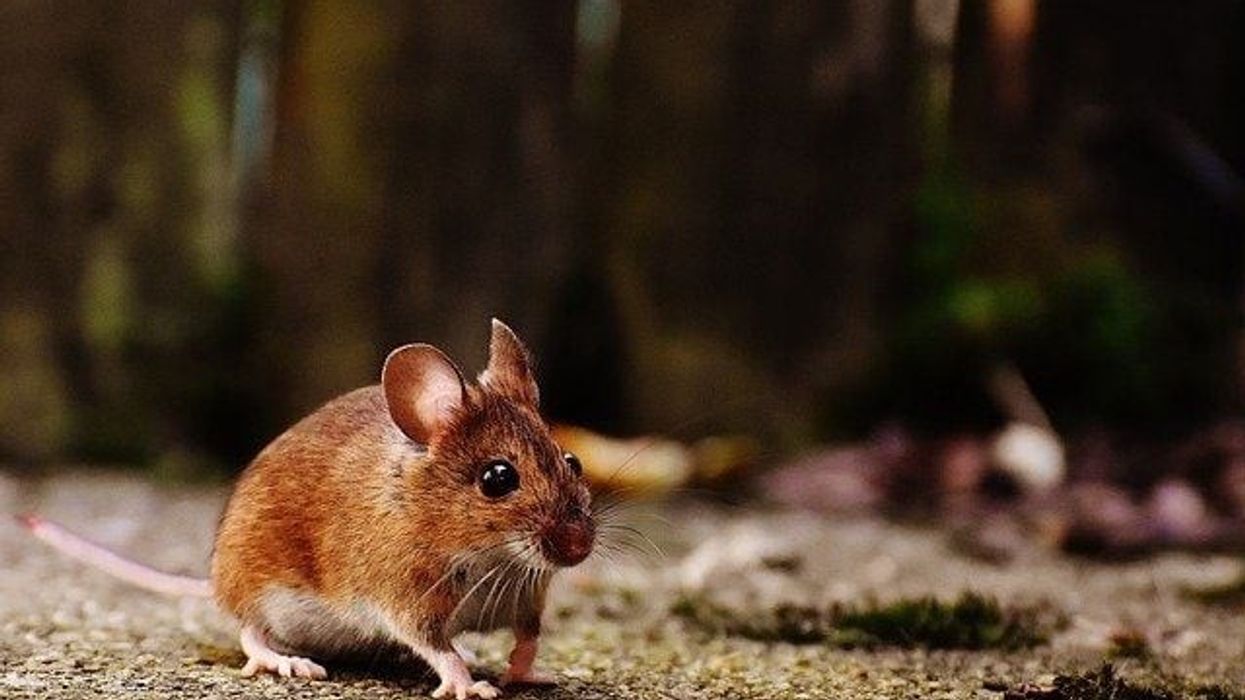Next time you walk around Alabama, keep an eye out for these little ones! The Alabama beach mouse (Peromyscus polionotus ammobates) is a popular rodent found along the Alabama Gulf Coast. This mouse is a subspecies of the oldfield, beach mouse (Peromyscus polionotus).
Seeds and insects are their main diet constituents and they build their burrows close to areas with good vegetation. Other favorites include sea oats, ground cherry, beach grass, and other plants.
They love settling in burrows, with the ideal mouse habitat being regions with good vegetation and near coastal dunes. Major enemies of this subspecies include cats, owls, and snakes that attack them in the vulnerable night hours.
For more relatable content, check out these white-footed mouse facts and tufted titmouse facts for kids.
Alabama Beach Mouse Interesting Facts
What type of animal is an Alabama beach mouse?
The Peromyscus polionotus ammobates is a type of mouse.
What class of animal does an Alabama beach mouse belong to?
The Alabama beach mouse (Peromyscus polionotus ammobates) belongs to the mammals class.
How many Alabama beach mice are there in the world?
We are not aware of the Alabama beach mouse population currently surviving in the world. However, the IUCN has given these mice a status of Endangered, meaning their populations are declining rapidly.
Where does an Alabama beach mouse live?
The Alabama beach mouse is said to inhabit the Alabama Gulf Coast. Earlier, this Endangered species covered a large part of the Fort Morgan Peninsula, extending from Ono Island all the way to Fort Morgan.
What is an Alabama beach mouse's habitat?
The Alabama beach mouse habitat includes coastal sand dune regions. They prefer dunes with beach grass, sea oats, and other sorts of grasses and vegetation. They are also found in interior dune ridges as well as scrub habitats.
Who do Alabama beach mice live with?
All mice, in general, are known to live in groups.
How long does an Alabama beach mouse live?
These beach mice are said to have a lifespan of 6-12 months.
How do they reproduce?
Beach mouse pairs are monogamous. The bonding between both the mates is quite strong, with both the adult beach mice cooperating well with the parental duties. The gestation period lasts for an entire month.
Reproductive activities are carried out throughout the year. However, a peak is observed during the early winter days, towards the end of the fall season and the breeding seems to slow down during the hot summer days. Around this time, seeds and insects are found in abundance.
These mice are known to excavate their little burrows in sand dunes and coastal dunes. The nest chamber in burrows is equipped with a small escape tunnel for emergency evacuations. Within the chamber, the nests are lined with dry grass and other soft material found by these mice.
Burrow openings are well situated within densely vegetated areas with many plants. The female mouse gives birth to a litter of two to eight mice. They are helpless and too small and are entirely dependent on their parents for survival.
What is their conservation status?
The conservation status of this beach mouse is Endangered.
Alabama Beach Mouse Fun Facts
What do Alabama beach mice look like?
The Alabama beach mouse is very small in size. The mouse has light body colors, usually camouflaged with the sand. They have really short tails, however, this constitutes about 55 percent of their body length. They have a small pink nose.
Males are usually smaller in size than females. They are colored between light brown to pale gray. The undersides and feet are entirely white.
It is quite common to spot a dark brown mid-dorsal stripe. The tail is bicolored, having a variable brown stripe on the upper side, and completely white underneath. The sides and belly are also white-tinted. They have tiny whiskers close to their nose.
How cute are they?
Oh, we love how cute and heartwarming these mice are.
How do they communicate?
We do not know how this endangered species of Alabama beach mouse communicate with each other. However, these mice are found living in groups so they must be able to speak to each other in some way.
How big is an Alabama beach mouse?
The total body length of this mouse is about 4.8-6 in (12.2-15.3 cm). They are about three times the size of a water beetle.
How fast can an Alabama beach mouse run?
We do not have information on the speed at which these beach mice run.
How much does an Alabama beach mouse weigh?
These little mice can weigh between 0.35-0.88 oz (10-25 g).
What are the male and female names of the species?
Generally, female mice are called does and male mice are called bucks.
What would you call a baby Alabama beach mouse?
In general, a baby mouse is called a pinky! Know why? This is because of the bright pink color of their bodies when they are born.
What do they eat?
The diet of this mouse is very minimal and it is known to feed entirely on seeds and insects. Seasonal seeds are their favorite and so their reproductive activities are also in line with the availability of seeds to forage.
Various insects consumed by this Endangered species include beetles, leafhoppers, and grasshoppers. They love feeding on ground cherry, sea oats, dune spurge, evening primrose, acorns, beach peas, blue steam, and several other plants.
Are they dangerous?
This Endangered species is not dangerous at all.
Would they make a good pet?
We would love the idea of keeping this beach mouse as a pet.
Did you know...
These little rodents are nocturnal, being extremely active in the dark hours of the night. Their large eyes and ears help them to navigate through the darkness.
Unfortunately, this species has been labeled as an Endangered one. Special areas have been set aside to protect their numbers, including the Bon Secour National Wildlife Refuge located in Baldwin County in Alabama.
What role does the Alabama beach mouse play in the ecosystem and food chain?
The ridges on the interior side of sand dunes prove to be a good habitat for survival, especially during flooding. Beach mice play a very important role in the ecosystem of coastal dunes.
The currently thriving mice populations indicate a healthy dune system. Beach mice are known to eat seeds as an integral part of their diet. These specimens contribute to the ecosystem by collecting and dropping around the seeds.
Seeds that are not consumed by other animals later grow into plants, thus stabilizing the dunes. Beach mice also contribute as a vital member of the food chain, as they are an important source of food for dune predators such as owls and snakes lurking out at night.
Why is the Alabama beach mouse endangered?
Multiple reasons have contributed to the decline of the population of this species. Residential and commercial development in coastal areas has been a major cause of mouse habitat loss. The construction of roadways has reduced the natural range of this subspecies.
Natural calamities like tropical storms and hurricanes have destroyed sand dunes. Also, pedestrians walking past the dunes has changed the habitat and affected sand dunes.
Predation by wild as well as domestic cats, and many other animals have contributed to the decline in population. Competition from other rodents for food and shelter has caused the population to decline. Exotic vegetation has also proven to be harmful to the health of these mice.
Here at Kidadl, we have carefully created lots of interesting family-friendly animal facts for everyone to discover! Learn more about some other mammals from our jerboa facts and kangaroo rat facts pages.
You can even occupy yourself at home by coloring in one of our free printable Alabama beach mouse coloring pages.









